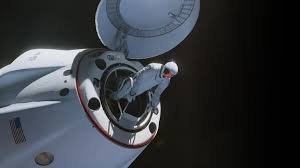SpaceX Polaris Dawn Mission: A Historic Milestone in Space Exploration
Introduction to the Polaris Dawn Mission
The SpaceX Polaris Dawn mission marks a significant step forward in human space exploration. Scheduled for launch in early 2024, this mission aims to achieve unprecedented objectives, including the first-ever private crewed flight to the International Space Station (ISS) for a series of groundbreaking scientific experiments. With a focus on advancing space technology and expanding our understanding of the cosmos, Polaris Dawn is poised to be a game-changer in the realm of private space travel.
Objectives of the Mission
The Polaris Dawn mission is designed to push the boundaries of human capability in space. It will involve a crewed spacecraft embarking on a mission to conduct scientific research, focusing on the effects of microgravity on human physiology. One of the key objectives is to study the impacts of space travel on the human body, which is crucial for future long-duration missions, including potential missions to Mars. The crew will also engage in testing new technologies that could enhance future exploration efforts.
Significance of Private Space Exploration
This mission represents a pivotal moment in the evolution of private space exploration. Historically, space missions were predominantly government-funded initiatives. The Polaris Dawn mission, backed by SpaceX, showcases the potential of private companies to contribute to significant advancements in space exploration. This transition from government-led to private-led initiatives opens the door for increased innovation, competition, and accessibility in the space sector.
Challenges Ahead
Despite its ambitious goals, the Polaris Dawn mission is not without challenges. Space travel involves numerous risks, including technical malfunctions and human factors. Ensuring the safety and success of the crew will require rigorous training and preparation. Furthermore, navigating the complexities of orbital mechanics and communication with ground control adds layers of difficulty that the team must address.
Conclusion
The SpaceX Polaris Dawn mission signifies a monumental achievement in the field of space exploration. As it embarks on its journey to expand our understanding of human capabilities in space, it paves the way for future missions that could redefine our relationship with the cosmos.

Why This News is Important
Advancing Human Knowledge
The Polaris Dawn mission is critical as it aims to enhance our understanding of human physiology in microgravity. By studying how the human body adapts to the unique challenges of space, scientists can develop better strategies for long-term human spaceflight, which is essential for missions beyond low Earth orbit.
Promoting Private Sector Innovation
The involvement of SpaceX in this mission highlights the growing role of private companies in space exploration. This shift not only fosters innovation but also encourages competition, which can lead to more cost-effective and efficient space missions.
Preparing for Future Missions
Polaris Dawn serves as a preparatory mission for longer-duration flights, including potential missions to Mars. The insights gained from this mission will be invaluable for planning future explorations that require human crews to endure extended periods in space.
Strengthening International Cooperation
This mission exemplifies the collaboration between private entities and governmental organizations, enhancing international partnerships in space exploration. Such collaborations are vital for pooling resources, expertise, and technology to address common challenges in space travel.
Inspiring Future Generations
By pushing the boundaries of what is possible in space travel, the Polaris Dawn mission serves as an inspiration for students and aspiring astronauts. It encourages the next generation to pursue careers in science, technology, engineering, and mathematics (STEM), crucial fields for advancing our understanding of the universe.
Historical Context
The Polaris Dawn mission builds on a long history of human space exploration that began with the launch of Sputnik in 1957. Over the decades, human spaceflight has evolved from government-led initiatives to include private enterprises like SpaceX. Previous missions, such as the Apollo lunar landings and the construction of the ISS, have set the stage for this new era of exploration. The increasing involvement of private companies in space travel represents a significant shift in how we approach exploration beyond our planet, aiming for more sustainable and frequent missions in the years to come.
Key Takeaways from SpaceX Polaris Dawn Mission
| S.No | Key Takeaway |
|---|---|
| 1 | Polaris Dawn aims to be the first private crewed flight to the ISS. |
| 2 | The mission will focus on studying human physiology in microgravity. |
| 3 | It highlights the growing role of private companies in space exploration. |
| 4 | Insights from this mission will aid in planning for future long-duration flights. |
| 5 | Polaris Dawn aims to inspire future generations to pursue careers in STEM. |
Important FAQs for Students from this News
Q1: What is the Polaris Dawn mission?
A1: The Polaris Dawn mission is a SpaceX initiative aimed at conducting a private crewed flight to the International Space Station (ISS) to study human physiology in microgravity.
Q2: When is the Polaris Dawn mission scheduled for launch?
A2: The Polaris Dawn mission is scheduled for launch in early 2024.
Q3: What are the main objectives of the Polaris Dawn mission?
A3: The main objectives include studying the effects of microgravity on human physiology and testing new technologies for future space exploration.
Q4: How does the Polaris Dawn mission impact private space exploration?
A4: The mission exemplifies the growing role of private companies in space exploration, promoting innovation and competition in the sector.
Q5: Why is the study of human physiology in space important?
A5: Understanding how the human body adapts to microgravity is crucial for planning long-duration space missions, including potential missions to Mars.
Some Important Current Affairs Links


